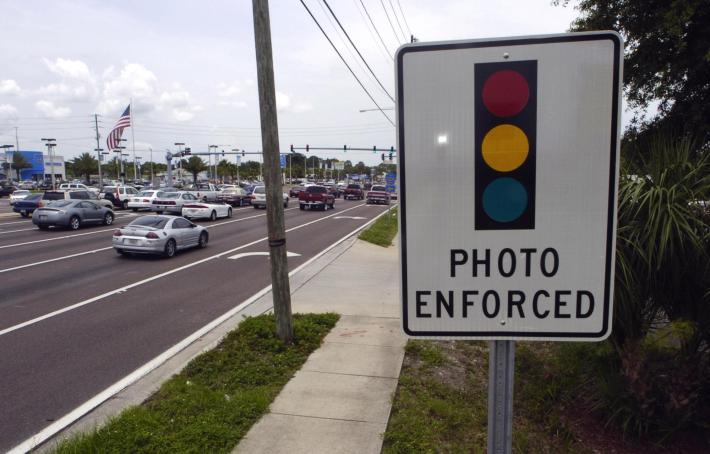
A new study shows that, despite their supposed reputation as government revenue collectors, red light cameras are saving lives.
The Insurance Institute for Highway Safety found that red light cameras prevented 159 deaths between 2004 and 2008 in 14 of the largest cities in the U.S., and that 815 deaths would have been prevented had cameras been operating in all U.S. cities with a population of over 200,000.
Says the IIHS:
The researchers found that in the 14 cities that had cameras during 2004-08, the combined per capita rate of fatal red light running crashes fell 35 percent, compared with 1992-96. The rate also fell in the 48 cities without camera programs in either period, but only by 14 percent.
Based on that comparison, the researchers concluded that the rate of fatal red light running crashes in cities with cameras in 2004-08 was 24 percent lower than it would have been without cameras. That adds up to 74 fewer fatal red light running crashes or, given the average number of fatalities per red light running crash, approximately 83 lives saved.
The study also found that crashes in cities with red light cams declined even at signalized intersections where no cameras were present -- leading to a projected total of 159 lives saved -- while collisions in cities that used no cameras showed a slight increase.
The IIHS says criticism of the cameras is overblown and ignores the human toll of traffic collisions. A Washington Post story on the IIHS report notes a AAA survey that found just eight percent of D.C. drivers in opposition to red light cameras. Yet the merits of lifesaving traffic tech tend to be drowned out by the vocal minority. "Somehow, the people who get tickets because they have broken the law have been cast as the victims," says Adrian Lund, president of IIHS. "We rarely hear about the real victims -- the people who are killed or injured by these lawbreakers."
Most of those victims are not the drivers who cause the collisions. Nearly two-thirds of those killed by red light runners in 2009 were occupants of other vehicles, passengers in the red light runners' vehicles, pedestrians or cyclists.
As if to prove Lund's point, the Post reports that two Virginia lawmakers have proposed legislation restricting cities' use of red light cameras in their state. In contrast to AAA's New York branch, which recently panned efforts to step up automated speed enforcement, AAA Mid-Atlantic supports red light cameras, and has denounced the Virginia bills.





